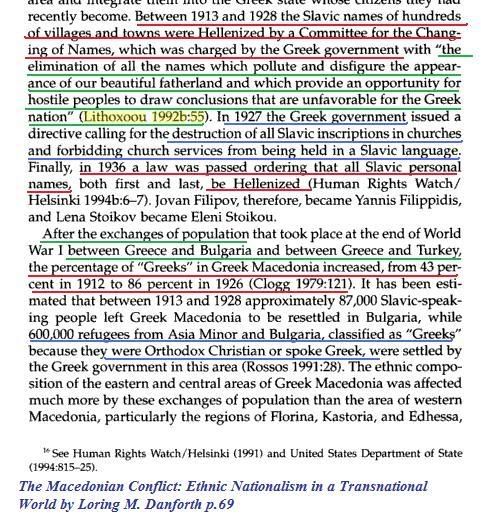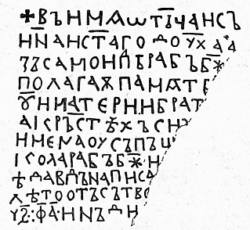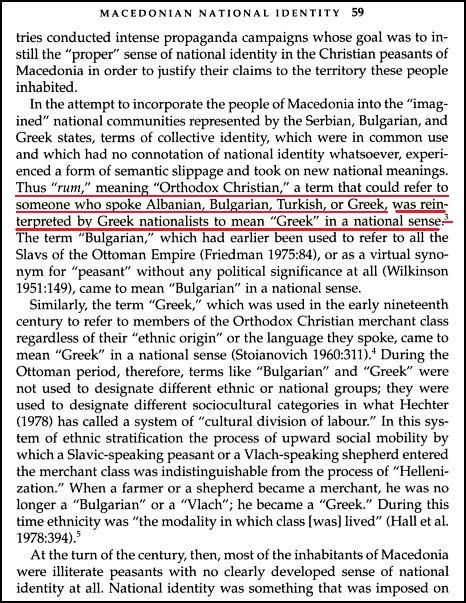Villages and towns were changed (Hellenised)

The Macedonian Conflict: Ethnic Nationalism in a Transnational World by Loring M. Danforth
Evangelos Kofos, the Special Counsellor on Balkan Affairs in the Greek Ministry of Foreign Affairs, reports that
The Greek state, like other Eastern European countries of the interwar
period, had pursued a policy of assimilation of ethnic groups. After
World War I, and some hesitation in the early 1920s, it had decided to
treat the remaining Slav-speakers as Slavophone Greeks.
Evangelos Kofos, Nationalism and Communism in Macedonia, Aristide D. Caratzas,
Publisher, New Rochelle, N.Y., 1993, page 255
Athens, the Parliment building with original Macedonian names


The Macedonian Conflict: Ethnic Nationalism in a Transnational World by Loring M. Danforth
Evangelos Kofos, the Special Counsellor on Balkan Affairs in the Greek Ministry of Foreign Affairs, reports that
The Greek state, like other Eastern European countries of the interwar
period, had pursued a policy of assimilation of ethnic groups. After
World War I, and some hesitation in the early 1920s, it had decided to
treat the remaining Slav-speakers as Slavophone Greeks.
Evangelos Kofos, Nationalism and Communism in Macedonia, Aristide D. Caratzas,
Publisher, New Rochelle, N.Y., 1993, page 255
Athens, the Parliment building with original Macedonian names








 I'll definitely do that.
I'll definitely do that.







Comment